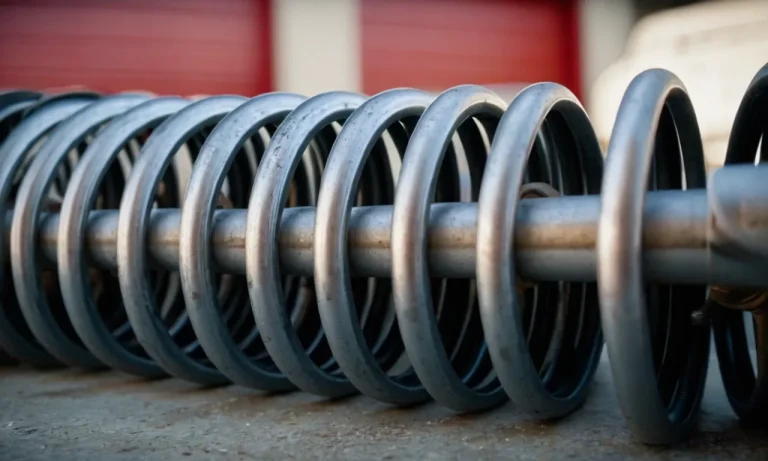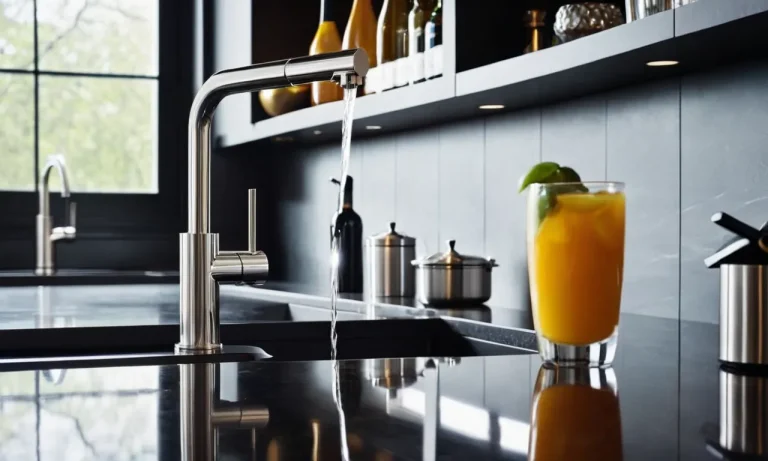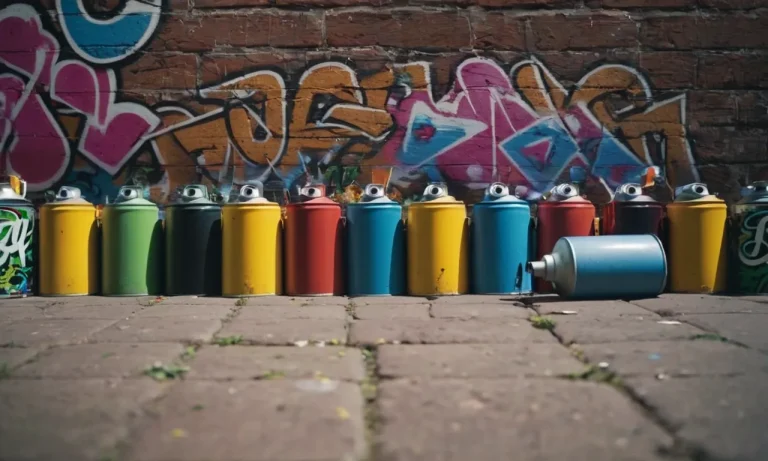Best Grout For Bathroom Floors: A Comprehensive Guide
Installing new tile in your bathroom? You’ll want to be sure to use the right grout between the tiles for maximum durability and water resistance. The grout fills the joints between the tiles and seals the surface to prevent moisture from seeping underneath.
Choosing the best grout for bathroom floors is critical for a long-lasting, attractive tile installation.
If you’re short on time, here’s a quick answer: Epoxy grout is the best choice for bathroom floors because of its waterproof properties and resistance to stains, mold, and mildew.
Factors to Consider When Choosing Bathroom Floor Grout
Choosing the right grout for your bathroom floor is essential for maintaining its appearance and functionality. There are several factors to consider when making this decision to ensure that your bathroom floor remains in top condition for years to come.
Moisture Resistance
One of the most important factors to consider when choosing bathroom floor grout is its moisture resistance. Bathrooms are high-moisture environments, and the grout needs to be able to withstand constant exposure to water without deteriorating.
Look for grout that is specifically designed for wet areas and has a high level of moisture resistance.
Stain Resistance
Another important factor to consider is the stain resistance of the grout. Bathrooms are prone to spills, splashes, and accidents that can cause unsightly stains on the grout. Opt for grout that is resistant to stains and is easy to clean.
This will help keep your bathroom floor looking great and prevent the need for frequent scrubbing or regrouting.
Mold/Mildew Resistance
Mold and mildew are common problems in bathrooms due to the moisture-rich environment. To prevent the growth of these unwanted guests, it is crucial to choose grout that is mold and mildew resistant. Look for grout that has antimicrobial properties to inhibit the growth of mold and mildew.
This will not only keep your bathroom floor clean but also maintain good indoor air quality.
Ease of Cleaning
Cleaning the bathroom floor is a regular chore, and choosing grout that is easy to clean can make this task much simpler. Consider grout that is smooth and non-porous, as this will make it easier to wipe away dirt and grime.
Additionally, grout that is resistant to staining will also be easier to clean, requiring less effort and time on your part.
Durability and Longevity
Bathroom floors endure a significant amount of foot traffic and regular use. Therefore, it is important to choose grout that is durable and long-lasting. Look for grout that is strong, resistant to cracking, and can withstand the daily wear and tear of a bathroom.
This will ensure that your bathroom floor remains in great condition for many years.
By considering these factors when choosing bathroom floor grout, you can make an informed decision that will result in a beautiful and functional bathroom floor. Remember to consult with a professional if you have any specific concerns or questions about the best grout for your bathroom.
Types of Grout for Bathrooms
Choosing the right grout for your bathroom floors is crucial for both functionality and aesthetics. There are several types of grout available in the market, each with its own set of advantages and disadvantages. Let’s take a closer look at some of the most popular types of grout for bathrooms:
Epoxy Grout
Epoxy grout is known for its exceptional durability and resistance to stains, water, and chemicals. It is made from a combination of epoxy resin and a filler powder, resulting in a strong and long-lasting grout. Epoxy grout is ideal for high-moisture areas such as bathrooms and showers.
It is also available in a wide range of colors, allowing you to achieve the desired look for your bathroom. However, it is important to note that epoxy grout can be more challenging to work with due to its quick drying time and the need for precise mixing ratios.
Cement-Based Grout
Cement-based grout is one of the most commonly used types of grout for bathroom floors. It is made from a mixture of cement, sand, and water. This type of grout is easy to work with and has good bonding properties. It is also available in a variety of colors to match your bathroom tiles.
However, cement-based grout is porous and may require regular sealing to prevent stains and moisture absorption. It is important to properly maintain and seal cement-based grout to ensure its longevity.
Latex-Modified Sanded Grout
Latex-modified sanded grout is a popular choice for bathroom floors due to its increased flexibility and strength. It is made by adding latex polymer to cement-based grout, which improves its resistance to cracking and shrinking.
The addition of sand provides better adhesion and reduces the likelihood of grout shrinkage. Latex-modified sanded grout is suitable for both indoor and outdoor applications and is available in various colors.
However, it is important to note that this type of grout may require more frequent cleaning, as the sanded texture can trap dirt and grime.
Unsanded Grout
Unsanded grout is commonly used for bathroom walls and for narrow grout lines. It is made from a mixture of cement and finely ground sand. Unsanded grout is smooth and easy to apply, making it ideal for small tile gaps. It is also less likely to scratch delicate tiles.
However, unsanded grout has less strength and durability compared to sanded grout. It is not recommended for areas with heavy foot traffic or high moisture levels. Proper sealing and maintenance are essential to prevent staining and moisture penetration.
It’s important to consider factors such as tile size, location, and personal preferences when choosing the right grout for your bathroom floors. Consulting with a professional or seeking advice from reputable tile and grout specialists can help ensure you make the best decision for your specific needs.
Best Grout Options for Bathroom Floors
Epoxy Grout
Epoxy grout is one of the best options for bathroom floors due to its exceptional durability and stain resistance. Made from a mixture of epoxy resins and a filler powder, this type of grout forms a strong bond and is highly resistant to moisture, chemicals, and stains.
Epoxy grout is also available in a wide range of colors, allowing you to match it perfectly with your bathroom tiles. It is particularly recommended for high-traffic areas or bathrooms with heavy use, as it can withstand constant exposure to water and cleaning products without cracking or deteriorating.
Modified Sanded Grout
Modified sanded grout is another popular choice for bathroom floors. It is a mixture of cement, fine sand, and additives that improve its performance and flexibility. This type of grout is easier to work with compared to traditional sanded grout, as it has improved bonding properties and is less prone to cracking or shrinking.
Modified sanded grout is suitable for both indoor and outdoor applications, making it ideal for bathroom floors that may be exposed to moisture. It is also available in a variety of colors to match your tiles.
Polyblend Sanded Grout
Polyblend sanded grout is a versatile option that offers both durability and affordability. It is made from a mixture of cement, fine sand, and polymers, which enhance its flexibility and strength. This type of grout is resistant to cracking and shrinking, making it a suitable choice for bathroom floors.
Polyblend sanded grout is available in a wide range of colors, allowing you to achieve the desired look for your bathroom. It is also relatively easy to clean and maintain, making it a practical choice for homeowners.
When choosing the best grout for your bathroom floors, it is important to consider factors such as durability, stain resistance, and ease of maintenance. Additionally, it is recommended to follow the manufacturer’s instructions for proper installation and sealing to ensure the longevity of your grout.
For more information and detailed recommendations, you can visit websites like Bob Vila or This Old House.
How to Apply and Maintain Bathroom Floor Grout
Surface Preparation
Before applying grout to your bathroom floor, it is crucial to prepare the surface properly to ensure a long-lasting and seamless finish. Start by thoroughly cleaning the tiles and removing any dirt, debris, or old grout. This can be done using a mild cleaning solution and a scrub brush or sponge.
Make sure to rinse the surface well and allow it to dry completely.
Pro Tip: For stubborn stains or mold, consider using a specialized grout cleaner or a mixture of baking soda and water. This can help to eliminate any discoloration or buildup on the grout lines.
Grout Application
Once the surface is clean and dry, it’s time to apply the grout. Choose a high-quality grout that is suitable for bathroom floors and matches the color of your tiles. Using a grout float, spread the grout diagonally across the tiles, making sure to fill in the gaps between them.
Remove any excess grout using a damp sponge, being careful not to remove too much from the grout lines.
Pro Tip: To achieve a professional finish, apply the grout in small sections and wipe off the excess before it dries. This will help to prevent the grout from hardening on the tiles, making the cleaning process easier.
Curing and Sealing
After applying the grout, it’s important to allow it to cure properly before exposing it to water or heavy traffic. Follow the manufacturer’s instructions for the recommended curing time. Once the grout is fully cured, consider applying a grout sealer to protect it from stains and moisture.
This will help to prolong the lifespan of your grout and maintain its appearance.
Pro Tip: Regularly reapply the grout sealer every few years or as recommended by the manufacturer to ensure maximum protection and longevity.
Ongoing Maintenance
To keep your bathroom floor grout looking great, it’s important to perform regular maintenance. This includes regular cleaning with a mild detergent or a grout cleaner. Avoid using harsh chemicals or abrasive scrub brushes, as these can damage the grout.
Additionally, consider using a grout whitener or colorant to refresh the color and appearance of your grout over time.
Pro Tip: For tough stains or grout that has become discolored, consider using a grout pen or marker to touch up the affected areas. This can provide a quick and easy fix, giving your bathroom floor a fresh and clean look.
By following these steps for grout application and maintenance, you can ensure that your bathroom floor grout remains in great condition for years to come. Remember to always refer to the manufacturer’s instructions and seek professional advice when needed.
Frequently Asked Questions
How long does bathroom grout last?
The durability of bathroom grout depends on various factors such as the quality of the grout, the installation technique, and the level of maintenance. On average, bathroom grout can last anywhere from 5 to 15 years.
However, with proper care and regular cleaning, it is possible to extend the lifespan of the grout.
What color grout is best for the bathroom?
When choosing the color of grout for your bathroom, consider factors such as the overall design aesthetic, the color of your tiles, and the level of maintenance you are willing to commit to. Generally, lighter-colored grouts, such as white or light gray, are popular choices as they can create a clean and bright look.
However, it’s important to note that lighter grouts may require more frequent cleaning to maintain their appearance.
Should I seal bathroom grout?
Sealing bathroom grout is highly recommended as it provides an extra layer of protection against moisture, stains, and mold. Sealing helps to prevent water penetration and makes the grout easier to clean.
It is especially important for bathroom floors, where there is a higher chance of water exposure. Regular resealing is also necessary to maintain the effectiveness of the sealant.
For more information on how to seal bathroom grout and the best products to use, you can visit The Spruce, a reputable home improvement website that provides step-by-step guides and product recommendations.
Conclusion
When installing tile floors in a humid bathroom environment, using the proper grout is key to creating a durable, water-resistant finish. Epoxy grout is the top choice for its unmatched stain, mold, and moisture resistance. Sanded, modified grouts also perform well.
Be sure to follow application and sealing steps carefully. With the right grout selected, your new bathroom floors will stay looking great for years to come.







